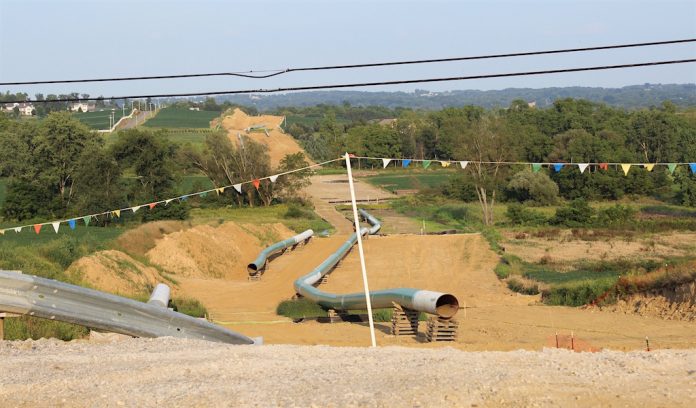If you believe in striking while the iron is hot, you’ve got to love Summit Carbon Solutions’ swift, decisive action on its multi-billion-dollar, CO2 pipeline just two weeks after Donald J. Trump, the nation’s climate-denier-in-chief, was reelected Nov. 5.
On Nov. 14, North Dakota approved Summit’s controversial plan to plant the pipeline across the Peace State. Earlier, the state’s Public Service Commission denied permission, effectively stopping the 2,000-mile, five-state pipeline from carrying CO2 from nearly 60 Midwestern ethanol refineries to a sequestration site in western North Dakota.
But the November approval quickly started dominoes falling. First to go was Iowa, whose state utilities commission granted Summit the power of eminent domain to bury 600 or so miles of pipeline in the state only if both North and South Dakota granted Summit permission to cross their states.
So, one down, one to go.
Then, on Nov. 19, Summit “resubmitted its permit application to South Dakota regulators,” noted the Iowa Capital Dispatch, “with what the company described as ‘major reroutes.’”
They were needed.
Like its northern neighbor, South Dakota had rejected Summit’s first plan due to “non-compliance with county laws mandating minimum distances between pipelines and existing features,” according to the Nov. 19 Des Moines Register.
That’s a big deal with farmers and ranchers in a rural state targeted for 700 miles of high pressure CO2 pipeline.
If South Dakota approves the new plan, Iowa will fall in line and the $9-billion pipeline may finally begin burying pipe and, with it, all its start-up woes. Two other state approvals, Minnesota and Nebraska, are not seen as troublesome. (Nebraska, in fact, has no state process for permitting CO2 pipelines.)
But South Dakota farmers and ranchers aren’t going anywhere quickly or quietly. Politically conservative — President-Elect Donald J. Trump won the state in a 63-to-34% landslide Nov. 5 and Gov. Kristi Noem has been tapped to serve in his Cabinet — the rural voters maintain a fierce independence.
In fact, rural anger over the pipeline was clear long before Trump’s blowout win. “Fourteen incumbent state legislators,” reported The Register, “lost to challengers in the June primary election and their support of the controversial pipeline law was a factor in many races.”
After anti-pipeline forces worked to fire the incumbents, they “gathered petition signatures and forced the (new) law onto the November ballot, where 59% of the voters rejected it.”
Even after that double affirmation of local control, Summit maintains it will begin South Dakota pipeline construction in 2026 or 2027.
That seems unlikely if the now-empowered, well-organized farmers and ranchers mount legal challenges on the company’s siting rules or its pursuit of eminent domain to move forward. Worse, if those fights proceed on a county-by-county basis, Summit’s South Dakota fight could take years.
And it could face even bigger headwinds in Washington, D.C.
The incoming Trump Administration is less than thrilled with any current program or policy seen as a “Biden” holdover, a “big government” regulatory scheme or almost anything “green.” The multi-year, multi-billion dollar carbon capture and sequestration policy — pushed by the Biden White House, passed by congressional Democrats, and central to Summit’s success — tics all three boxes.
Still, the incoming administration might look beyond all those shortcomings if it deems the pipeline supportive of its boisterous “drill, baby, drill” plans for fossil fuels.
And it does if Summit downplays its “green” benefits to highlight what environmentalists have always seen as the pipeline’s real purpose — to prop up the ethanol industry while delivering pressurized CO2 to North Dakota’s Bakken frac oil field to “pump, baby, pump” more fossil fuels.
If, that is, South Dakota’s farmers and ranchers say so.















North Dakota is the Peace GARDEN State… just saying.